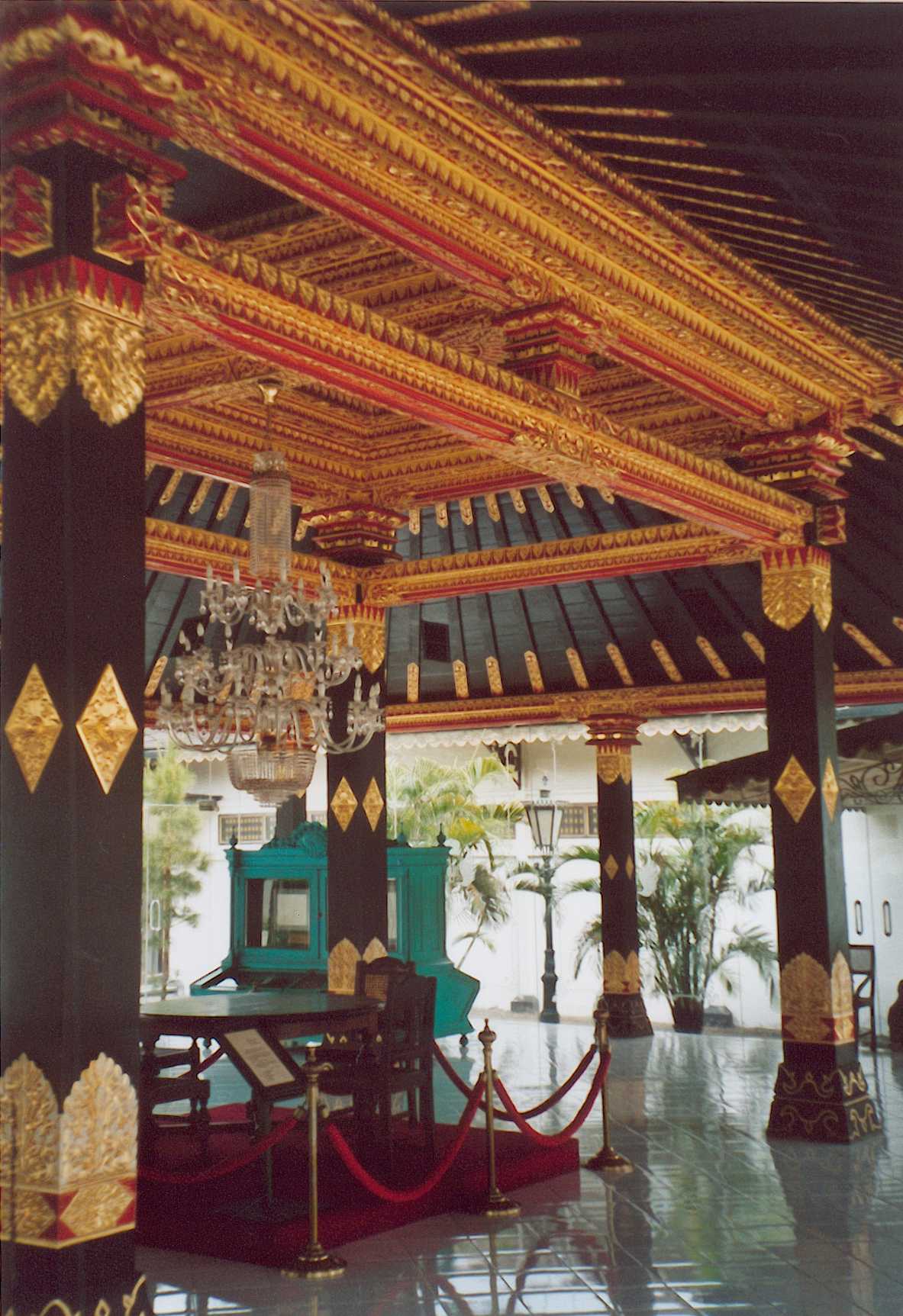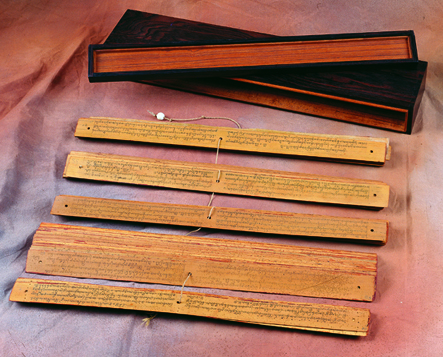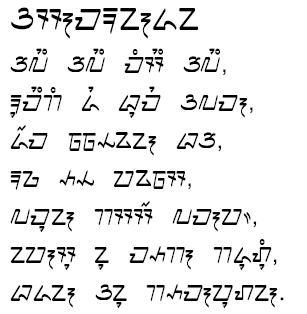|
Javanese Culture
Javanese culture () is the culture of the Javanese people. Javanese culture is centered in the provinces of Central Java, Yogyakarta and East Java in Indonesia. Due to various migrations, it can also be found in other parts of the world, such as Suriname (where 15% of the population are of Javanese descent), the broader Indonesian archipelago region, Cape Malays, Cape Malay, Malaysia, Singapore, Netherlands and other countries. The migrants bring with them various aspects of Javanese cultures such as music, traditional dances and art of shadow play. The migration of Javanese people westward has created the Javanese culture in a small part of the northern coast that is distinct from the Sundanese people, Sundanese culture in the majority of West Java and Banten. Being the largest ethnic group, the Javanese culture and people influence Indonesian politics and culture, a process sometimes described as Javanisation. Literature Javanese literature tradition is among the earliest ... [...More Info...] [...Related Items...] OR: [Wikipedia] [Google] [Baidu] |
Jogja
Yogyakarta is a city and capital of the Special Region of Yogyakarta. Yogyakarta may also refer to: * Yogyakarta International Airport (YIA) * Yogyakarta Principles, a document about human rights with regard to sexual orientation. * Special Region of Yogyakarta, a provincial-level autonomous region in Indonesia. * Yogyakarta Sultanate The Sultanate of Yogyakarta, officially the Sultanate of Ngayogyakarta Hadiningrat ( ; ), is a Javanese monarchy in Yogyakarta Special Region, in the Republic of Indonesia. The current head of the sultanate is Hamengkubuwono X. Yogyakart ..., a Javanese monarchy in the Special Region of Yogyakarta. See also * {{geodis ... [...More Info...] [...Related Items...] OR: [Wikipedia] [Google] [Baidu] |
Javanese Literature
Javanese literature is, generally speaking, literature from Java and, more specifically, from areas where Javanese language, Javanese is spoken. However, similar with other literary traditions, Javanese language works were and not necessarily produced only in Java, but also in West Java, Sunda, Madura, Bali, Lombok, South Sumatra, Southern Sumatra (especially around Palembang) and Suriname. This article only deals with Javanese written literature and not with oral literature and Javanese theatre such as ''wayang''. Overview The Javanese language is an Austronesian language and heavily influenced principally by Sanskrit in its earliest written stage. Later on it has undergone additional influences from mainly Arabic, Dutch, and Malay/Indonesian. Beginning in the 9th century, texts in Javanese language using a Brahmic derived script were written. The oldest written text in Javanese is the so-called Inscription of Sukabumi which is dated March 25, 804. Although this is not a piece of ... [...More Info...] [...Related Items...] OR: [Wikipedia] [Google] [Baidu] |
Tantu Pagelaran
Tantu Pagelaran or Tangtu Panggelaran is an Old Javanese manuscript written in the Kawi language that originated from the 15th-century Majapahit period. The manuscript describes the mythical origin of Java island. Background The manuscript was composed in the 15th century, originating from East Java. Stuart Robson and Hadi Sidomulyo have posited that the origins of the text may date to the era of the Kediri kingdom due to historical and topographical references within the work. While the original text itself has no section breaks, contemporary scholars have attempted to divide the work for structure and simplicity. The 1924 Dutch translation by Theodoor Pigeaud divided the text into seven chapters roughly corresponding to its subject matter. The English translation by Robson and Sidomulyo divides the text into three large parts. Legend of moving Meru to Java The manuscript explained that Batara Guru (Shiva) ordered the gods Brahma and Vishnu to fill the island of Java ... [...More Info...] [...Related Items...] OR: [Wikipedia] [Google] [Baidu] |
Nagarakretagama
The ''Nagarakretagama'' or ''Nagarakṛtāgama'', also known in Bali as ''Desawarnana'' or ''Deśavarṇana'', is an Old Javanese eulogy to Hayam Wuruk, a Javanese king of the Majapahit Empire. It was written on lontar as a ''kakawin'' by Mpu Prapanca in 1365 (1287 Saka year). The ''Nagarakretagama'' contains detailed descriptions of the Majapahit Empire during its greatest extent. The poem affirms the importance of Hindu–Buddhism in the Majapahit empire by describing temples and palaces and several ceremonial observances. The manuscript In 1894, the Dutch East Indies launched a military expedition against the Cakranegara royal house of Lombok. That year, the Dutch took the manuscript as part of the valuable '' Lombok treasure'', war booty from the destroyed palace of Mataram-Cakranagara in Lombok. The first Western scholar to study the manuscript was , a Dutch philologist. He accompanied the KNIL expedition to Lombok in 1894 and is credited with saving the valu ... [...More Info...] [...Related Items...] OR: [Wikipedia] [Google] [Baidu] |
Majapahit
Majapahit (; (eastern and central dialect) or (western dialect)), also known as Wilwatikta (; ), was a Javanese people, Javanese Hinduism, Hindu-Buddhism, Buddhist thalassocracy, thalassocratic empire in Southeast Asia based on the island of Java (in modern-day Indonesia). At its greatest extent, following significant military expansions, the territory of the empire and its tributary states covered almost the entire Nusantara (term), Nusantara archipelago, spanning both Asia and Oceania. After a Regreg war, civil war that weakened control over the vassal states, the empire slowly declined before collapsing in 1527 due to an Demak–Majapahit conflicts, invasion by the Demak Sultanate, Sultanate of Demak. The fall of Majapahit saw the rise of History of Indonesia#Islamic civilizations, Islamic kingdoms in Java. Established by Raden Wijaya in 1292, Majapahit rose to power after the Mongol invasion of Java and reached its peak during the era of the queen Tribhuwana Wijayatungga ... [...More Info...] [...Related Items...] OR: [Wikipedia] [Google] [Baidu] |
Pararaton
The ''Pararaton'' (''Book of Kings''), also known as the ''Katuturanira Ken Angrok'' (''Story of Ken Angrok''), is a 16th-century Javanese historical chronicle written in Kawi language, Kawi (Old Javanese). The comparatively short text of 32 folio-size pages (1126 lines) contains the history of the kings of Singhasari and Majapahit in eastern Java (island), Java. The ''Pararaton'' opens with a formal incarnation of the founder of the Singhasari kingdom (1222–1292), Ken Arok (or Ken Angrok). Almost half of the manuscript is the story of Ken Arok's career before he acceded to the throne in 1222. This part is mythical. There then follows several shorter narrative fragments in chronological order. Many of the events recorded here are dated. Towards the end, the pieces of history become shorter and shorter and are mixed with genealogy, genealogical information concerning the members of the Rajasa dynasty, royal family of the Majapahit empire. Since the oldest Colophon (publishing ... [...More Info...] [...Related Items...] OR: [Wikipedia] [Google] [Baidu] |
Ken Dedes
Ken Dedes was the first queen of Singhasari. She was the wife of Ken Arok, the first ruler of Singhasari, Java, Indonesia. She was later considered the ancestress of kings that ruled Java, the great mother of the Rajasa dynasty, the royal family that ruled Java from the Singhasari to the Majapahit era. Local tradition mentioned her as an embodiment of perfect beauty. Early life Most of the record of her life comes from the account of Pararaton (The Book of Kings), a mixed historical account including supernatural tales and stories. She was the daughter of a Buddhist monk, Mpu Purwa. According to tradition, Ken Dedes' exceptional and extraordinary beauty was famous throughout the land and attracted Tunggul Ametung, the ruler of Tumapel (now the Singhasari district, East Java) who later took her as his wife. According to local tradition, Ken Dedes was kidnapped while her father was away meditating and forced to become Tunggul Ametung's wife. Her father cursed Tunggul Ametung, sayi ... [...More Info...] [...Related Items...] OR: [Wikipedia] [Google] [Baidu] |
Ken Arok
Ken Arok (or Ken Angrok), Rajasa (died c. 1227), was the founder and first ruler of Singhasari (also spelled Singosari), a medieval Indianized Hindu–Buddhist kingdom in the East Java area of Indonesia. He is considered the founder of the Rajasa dynasty of the Singhasari and Majapahit line of monarchs. He came from humble origins but subsequently rose to be the most powerful ruler in Java. His life was coloured with adventures, treacheries, and tragedies. Early life According to the ''Pararaton'', a semi-mythical literary work on the kings of Java, Ken Arok was born to a poor peasant family on the bank of the Brantas River in East Java. He was the son of a Brahmin Sri Jayamerta and his mother Ken Endok. The infant Ken Arok was placed in the Brantas by his parents who hoped he would be found by a wealthier family and get a better life. However, the baby Ken Arok was found by a thief called Lembong. His foster father taught him all his criminal skills and young Ken Arok grew t ... [...More Info...] [...Related Items...] OR: [Wikipedia] [Google] [Baidu] |
Panji (prince)
The Panji tales are a cycle of Javanese stories, centred around the legendary prince of the same name (actually a title) from East Java, Indonesia. Along with the Ramayana and Mahabharata, the tales are the basis of various poems, sculpture and painting, dance-drama performances and genres of wayang (shadow puppetry), especially the one known in East and Central Java as ''wayang gedhog'' (the meaning here is unclear, as "gedhog" means "a thumping sound"). Panji tales have been the inspiration of Indonesian traditional dances, most notably the topeng (mask) dances of Cirebon, Central Java and Malang, as well as gambuh dance-drama in Bali. Especially in the environs of Kediri, part of the probable homeland of the tales of Panji, local stories grew and were connected with the obscure legendary figure of Totok Kerot. Panji tales have spread from East Java (Indonesia) to be a fertile source for literature and drama throughout Indochina Peninsula (a region that includes modern-da ... [...More Info...] [...Related Items...] OR: [Wikipedia] [Google] [Baidu] |
Smaradhana
''Smaradahana'', also known as ''Smaradhana'', ''Asmaradhana'', ''Asmaradahana'', ''Asmaradana'', ''Asmarandhana'', or ''Asmarandana'' is an old Javanese poem (''kakawin'') written by Mpu Dharmaja as the eulogy for King Kameshwara, Kameçvara of Kediri (historical kingdom), Kediri in early-12th century East Java. The story describes the disappearance of Kamadeva, Kamajaya (the Hindu god of love) and Rati, Kamaratih (the Hindu goddess of love) from Svargaloka after being burnt by a fire that burst from the third eye of Shiva. Their spirits fall upon the earth where incarnated as human beings, their spirits seduce and inspire lovers' hearts. Etymology ''Smaradahana'', ''Smaradhana'', ''Asmaradhana'' or ''Asmaradahana'' is derived from Sanskrit words of ''smara'' and ''dahana''. ''Smara'' means "desire", while ''Dahana'' can be translated as "burning". Thus, ''Smaradhana'' can be roughly translated as "Burning of desire" or "extinguishing the desire". ''Smaradhana''s themes have in ... [...More Info...] [...Related Items...] OR: [Wikipedia] [Google] [Baidu] |
Kediri (historical Kingdom)
Kediri Kingdom or Kadiri, also known as Panjalu, was a Hindu-Buddhist Javanese kingdom based in East Java from 1042 until 1222 (1292–1293 under Jayakatwang). This kingdom is centered in the ancient city ''Dahanapura'', despite the lack of archaeological remains, the age of Kediri saw much development in classical literature. Mpu Sedah's '' Kakawin Bharatayuddha'', Mpu Panuluh's ''Gatotkacasraya'', and Mpu Dharmaja's '' Smaradhana'' blossomed in this era. The kingdom's capital is believed to have been established in the western part of the Brantas River valley, somewhere near modern Kediri city and surrounding Kediri Regency. Etymology and names The city of Daha existed before the founding of the kingdom. Daha is an abbreviation of ''Dahanapura'', which means ''city of fire''. This name is listed in the Pamwatan inscription issued by Airlangga in 1042. This is following the news in '' Serat Calon Arang'', that at the end of Airlangga's reign, the center of the kingdom ... [...More Info...] [...Related Items...] OR: [Wikipedia] [Google] [Baidu] |





